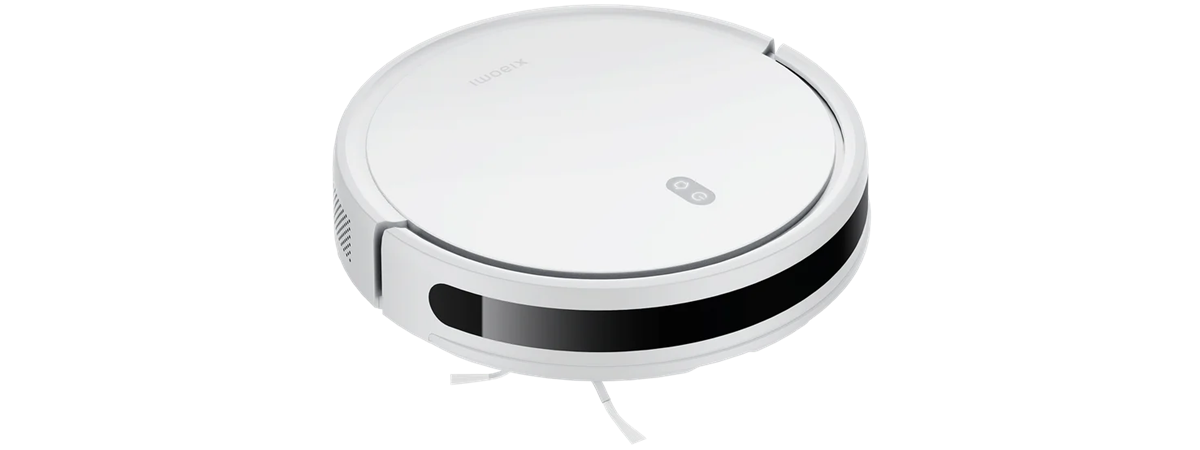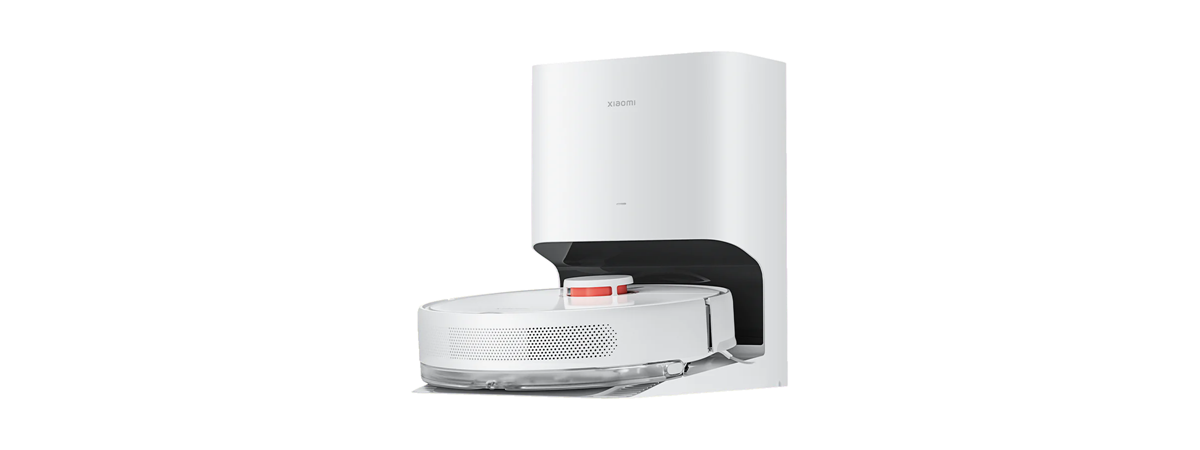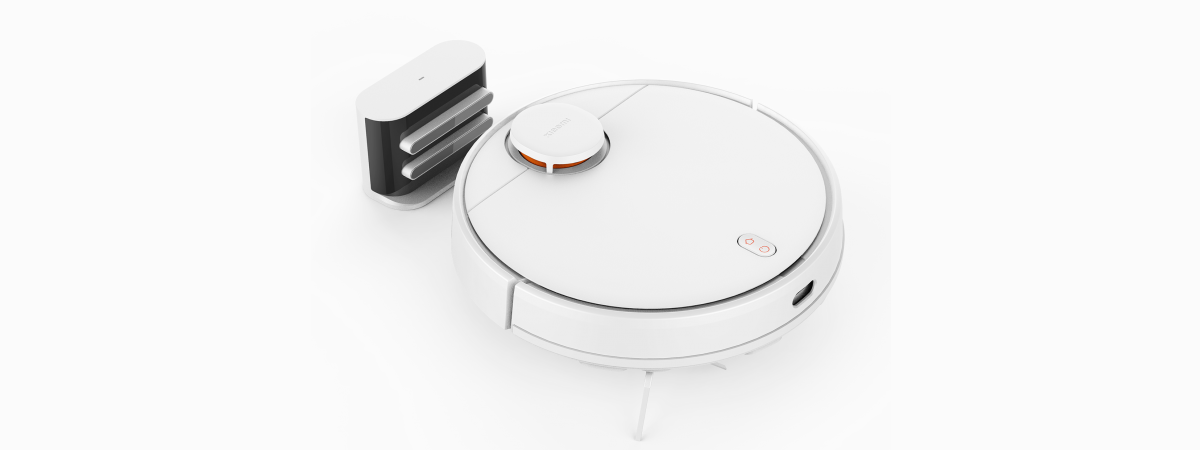
Xiaomi recently launched a new lineup of smart devices, which includes new robot vacuum cleaners for all budgets. These devices have gotten smarter and more efficient in the last couple of years, and I was curious to see the progress made by Xiaomi. So the company sent me their Xiaomi Robot Vacuum S10 (model number B106GL) for testing: it’s a mid-range robot vacuum cleaner with an affordable price and interesting specifications. After using it for the last couple of days, here’s what I’ve learned about it:
Xiaomi Robot Vacuum S10: Who is it good for?
Xiaomi Robot Vacuum S10 is a good choice if:
- You need a reasonably-priced robot vacuum cleaner
- You have a small to medium apartment (540-1100 sq ft or 50-100 m2)
- You want a vacuum that can be controlled remotely and synced with other smart devices
- Your space requires regular mopping
Pros and cons
These are the things I like about the Xiaomi Robot Vacuum S10:
- Reasonably priced
- Excellent suction power in Turbo mode
- It navigates obstacles well
- The robot can vacuum and mop at the same time
- The mopping feature is useful for cleaning lighter stains
- The level of control provided by the Mi Home app is excellent
Some aspects can be improved:
- The dustbin is rather small and needs to be cleaned after each run
- The autonomy and charging speeds could be better
- Firmware updates come without release notes
Verdict
The Xiaomi Robot Vacuum S10 is competitively priced, well-engineered, and has a classic design for devices of its type. It does a good job of cleaning all kinds of living spaces, as long as they’re not too large, and the mopping feature can be useful to some people. Controlling the Xiaomi Robot Vacuum S10 is easy, and the Mi Home app helps it integrate well into Xiaomi’s smart ecosystem. You can even add it to Google Home or Amazon Alexa, which is great for people interested in managing their smart home with many different devices. While the vacuum’s battery is not as generous as the ones on other devices from its class, it’s good enough for small to medium-sized homes. The only notable downside is that the dustbin requires frequent cleaning, slightly reducing its usefulness.
Unboxing the Xiaomi Robot Vacuum S10
The Xiaomi Robot Vacuum S10 comes in a large box, weighing around 13.88 pounds or 6.3 kg. On the front and back, you see a picture of the vacuum cleaner, while on the sides, the manufacturer promotes its most important features. On the bottom of the box, you find some stickers with further information about the product, the items inside the box, and the serial number of the product you just bought.
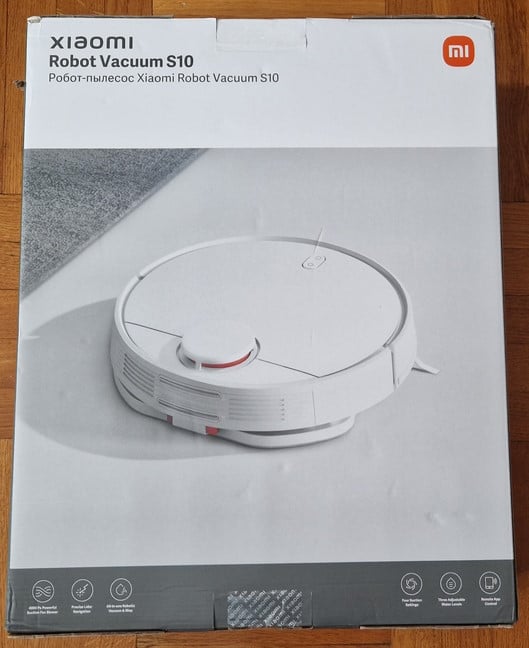
The packaging for Xiaomi Robot Vacuum S10
When you take everything out of the box, you should find the following:
- The Xiaomi Robot Vacuum S10
- Its power adapter and charging dock
- A 2-in-1 water tank and dust container, and the cleaning brush
- The mop frame and the pad preinstalled on it
- The user manual, warranty details, and other leaflets
The main brush is preinstalled on the Xiaomi Robot Vacuum S10.
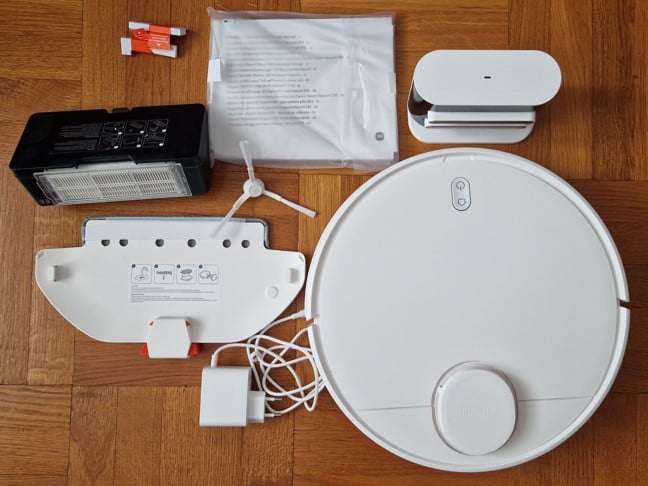
Everything you find inside the box
The unboxing experience for Xiaomi Robot Vacuum S10 is simple and straightforward. The packaging is rather basic and does a decent job of protecting its contents. Inside the box, you find all the necessary items and information to quickly set up and start using the vacuum.
Design and hardware specifications
The design of the Xiaomi Robot Vacuum S10 is typical for a smart vacuum cleaner. The device is all white, has a rounded shape, and a size of 13.8 x 3.7 inches or 350 x 94.5 mm in diameter and height. Its net weight is 10.5 pounds or 4.8 kg, making it heavier than similar devices. On the top is the LIDAR dome, hosting the laser distance sensor for precise positioning and accurate distance measurements. This is the tech that makes it hit fewer objects in your home and feel like a smart device, able to find its way around countless obstacles. And to make things even more interesting, the Xiaomi Robot Vacuum S10 has a scanning range of up to 8 meters or 26 feet.
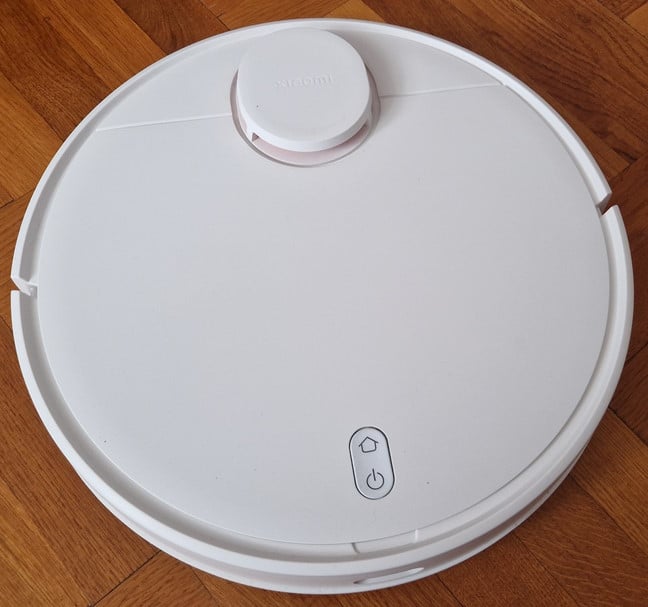
Xiaomi Robot Vacuum S10 has a classic look
On the top, you also have two buttons which, depending on how they are pressed, can be used to turn the robot On and Off, reset its Wi-Fi, or send it back home, to its charging station. The buttons can light up in different colors indicating the robot’s actions, like charging, upgrading the firmware, returning to the docking station, encountering an error in its functioning, or getting disconnected from Wi-Fi. On the front of the Xiaomi Robot Vacuum S10, there is a hole that hosts the infrared receiving sensor.
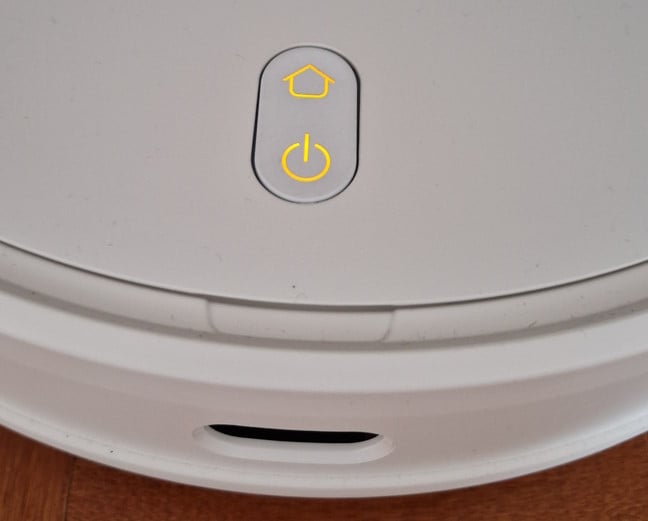
The buttons on the top have several uses
The plastic cover, which contains the hole mentioned earlier, goes all the way around and also acts as a collision sensor. Together with the infrared receiving sensor, they’re used to detect movement (like your pets walking around the vacuum while it’s cleaning) and to calculate how far an object is from the device.
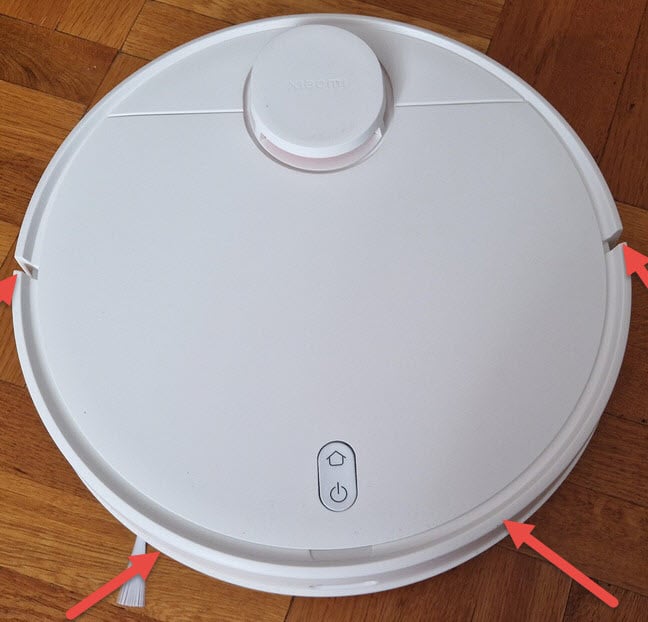
The collision sensor
When you open the lid, you see the slot for the dust compartment and a brush for cleaning the vacuum.
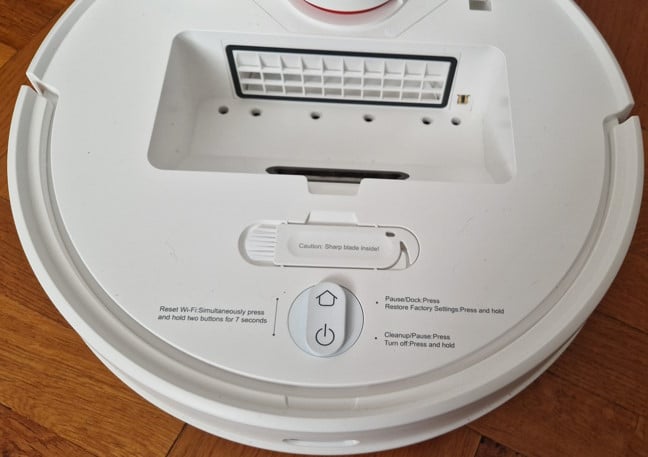
The slot for the dust compartment
Adding the 2-in-1 dust compartment is easy. And on its right side, you find a plug for the water tank.
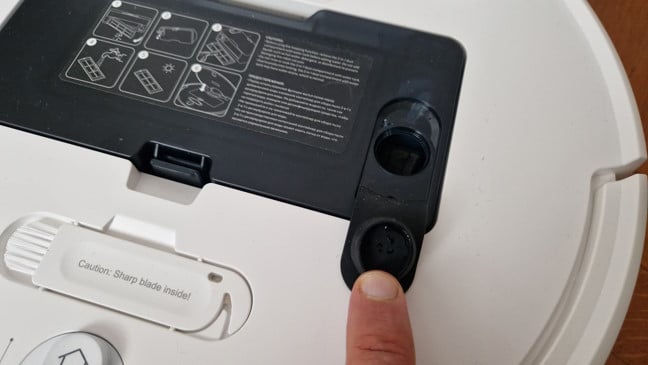
The 2-in-1 dust compartment holds both dust and water
You can add water to the Xiaomi Robot Vacuum S10 because it has a mopping function. The mop holder, which has the cleaning pad already attached, should be inserted in its dedicated slot on the vacuum’s bottom.
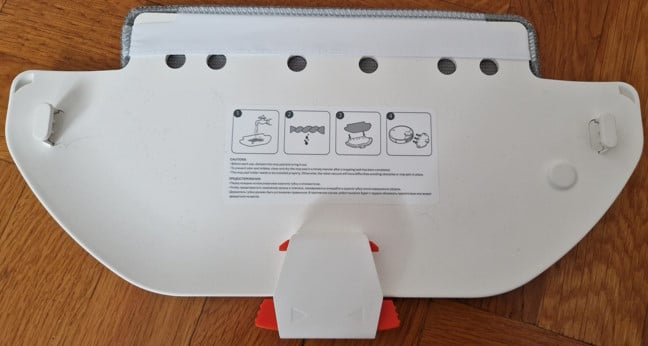
The mop pad is useful
You’ll be happy to know that the mop pad can be easily removed, washed when required, and placed back with little effort. To make things even better, the Xiaomi Robot Vacuum S10 can function simultaneously as a vacuum and a mop.
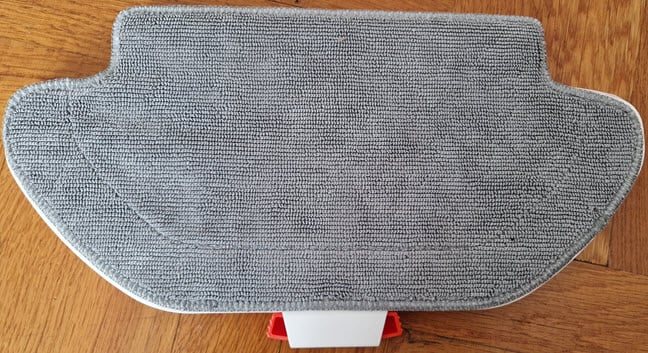
The mop can be washed with ease
Turning the robot belly-up reveals the cliff sensors, the main brush, the removable side brush, rubber wheels, and the contacts for adding the mop pad.
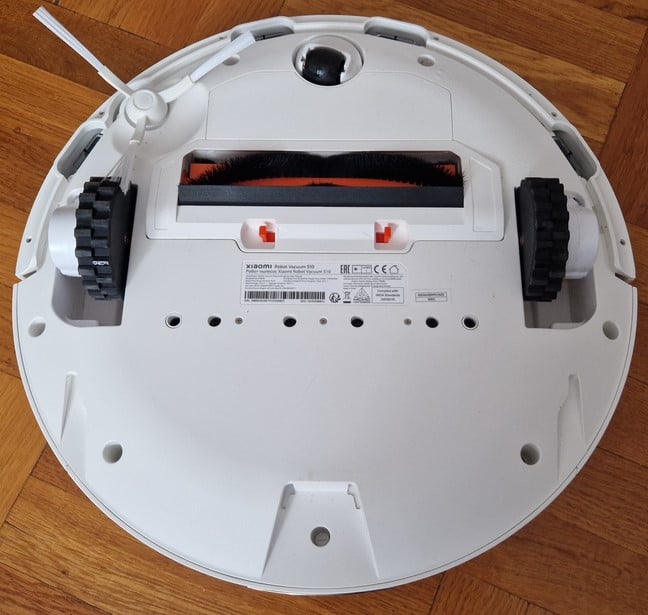
The bottom of Xiaomi Robot Vacuum S10
Xiaomi Robot Vacuum S10 has a suction power of 4000 Pascals, which is quite a lot for a mid-range vacuum cleaner. Unfortunately, its battery has a nominal capacity of 3200 mAh, a bit lower than what you find on similarly-priced models. Nevertheless, it ensures the vacuum cleaner can offer up to 130 minutes of cleaning when using its standard settings.
The battery is charged by the charging dock, which has a size of 152 x 2.93 x 3.91 inches or
152 x 74.6 x 99.5 mm.
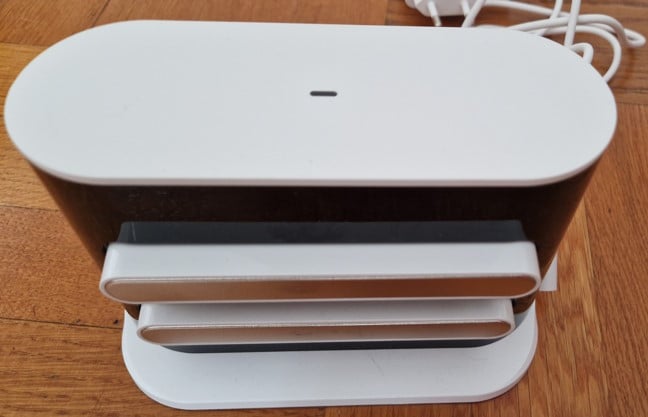
The charging dock
Since security tends to be weak on smart home devices, Xiaomi decided to improve this aspect. As a result, this vacuum cleaner comes with TÜV Rheinland Cybersecurity and Privacy Protection Standard Certification. What does this mean? Well, here are a couple of things that you may appreciate: the map created by Xiaomi Robot Vacuum S10 is encrypted when transmitted to the cloud through the Mi Home app. The app has been hardened to meet the security requirements of TÜV Rheinland. In addition, the device includes a security chip that handles user data encryption and secure transmission.
For more specs and technical information, visit the product’s official page: Xiaomi Robot Vacuum S10.
Xiaomi Robot Vacuum S10 is a well-designed vacuum cleaner with a price and specifications worthy of a mid-range product. Most people will like how it looks and the features it offers.
Using the Xiaomi Robot Vacuum S10
Before turning on the Xiaomi Robot Vacuum S10, I highly recommend reading the user manual, all the instructions on how to use it, clean it, and the maintenance tasks you should perform regularly. Decide on a spot for the docking station and, while the vaccum’s charging for the first time, install the Mi Home app from the Play Store or the AppStore, depending on your phone. Then, open the app, create a Xiaomi account if you don’t have one, and add the vacuum cleaner. When you’re on the Add device page, I recommend using the Search feature or placing the phone next to the vacuum, so that it detects the Xiaomi device faster. Luckily, you don’t have to scroll through an endless list of smart devices.
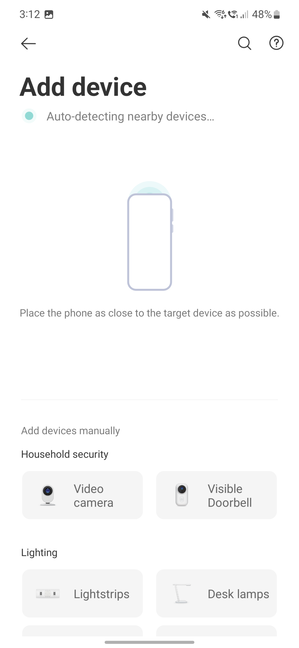
Adding the Xiaomi Robot Vacuum S10 to the Mi Home app
After the Xiaomi Robot Vacuum S10 is detected, connect it to the Wi-Fi, set the room it’s placed in, and its name. This vacuum cleaner can only connect to wireless networks on the 2.4 GHz band. If your router emits its wireless signal only on the 5 GHz band, the vacuum cleaner won’t be able to connect to the network.
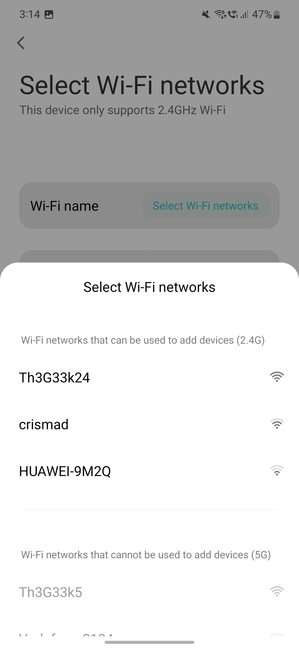
Connecting the robot to the Wi-Fi is mandatory
Lastly, you also decide whether to invite your family to use the vacuum cleaner together. Then, the Mi Home app displays a Cleaning guide with useful recommendations on placing the vacuum cleaner in your home and using it safely and efficiently. It is a great idea to pay attention to these recommendations.
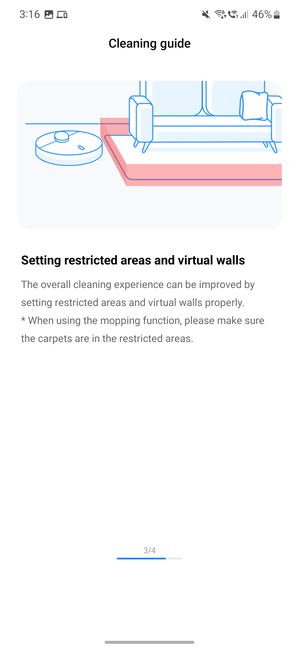
Read and follow the Cleaning guide
When everything is set, you can start using the app and the Xiaomi Robot Vacuum S10. You’ll quickly notice that you need a map of your home. Once the robot is fully charged, you should make a first run to Create map. This run is quick because the Xiaomi Robot Vacuum S10 won’t do any cleaning. It will only scan your home to create the map and understand where the main obstacles are.
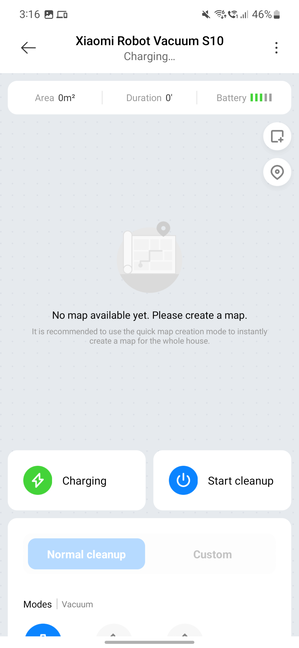
You first need to create a map
The initial map is not very precise and gets refined only after the first vacuuming round. Therefore, you should run a quick cleanup using the standard settings without the mopping feature turned on. This way, the first vacuuming of your home will perfect the map. During the first run, you might want to monitor the vacuum cleaner in order to better understand how it works and the obstacles it cannot handle well. You could stumble upon some surprises. 🙂 Once it’s over, edit your map, set virtual walls, set the areas forbidden for vacuuming or mopping, or both.
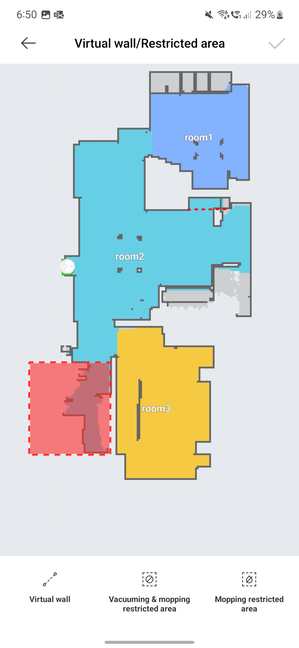
You can add virtual walls and set restricted areas
The Mi Home app has many settings: you can choose the cleaning type, the vacuuming strength, water usage for mopping, the cleaning pattern and thoroughness, and so on. You can also schedule cleaning tasks for your entire home or only some rooms, modify the volume of the voice notifications or mute them altogether, issue commands like “return to charging station,” “start /pause/stop cleaning,” or “clean area,” and configure the settings for each room individually. Advanced users are going to love the wealth of options offered by Xiaomi.
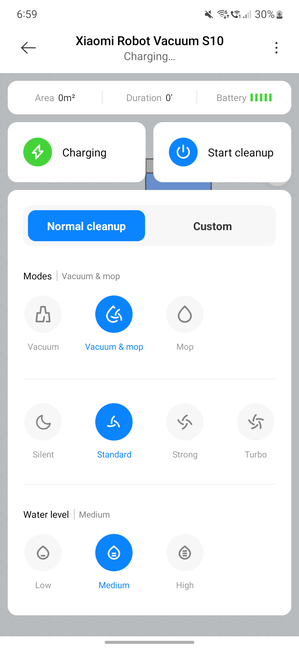
You have plenty of settings for how cleaning is performed
The Xiaomi Robot Vacuum S10 does a good job at cleaning your home in one go, as long as there is a manageable amount of dirt on the floor and you don’t have areas where there’s too much dust gathered in one place. Otherwise, you should ask for a second run. Luckily, you can easily ask it to clean just one room in your home, as I did in the room below when I wasn’t happy with the result I got in my kitchen.
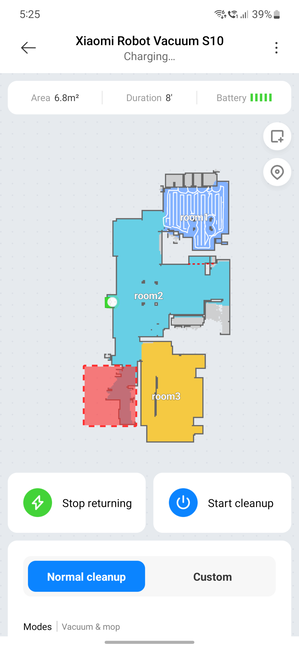
You can clean just one room or select those you want cleaned
One less positive aspect you’ll quickly notice is that the dust compartment has a small capacity (300 ml) and fills up quickly. Because of that, you need to clean it after each run. The cleaning speed is around 1 minute for each square meter or 10.7 feet. The suction power is OK, but you should set it to Turbo for the best results. However, when using this cleaning mode, the noise gets close to 60dB, which may bother you or your pets. Check the video below if you want to hear how noisy the Xiaomi Robot Vacuum S10 is in each cleaning mode.
The suction modes generate more or less noise and have different suction power: Silent works at 600 Pascals, Standard works at 1000 Pascals, Strong at 1800 Pascals, and Turbo at 4000 Pascals. Unfortunately, the gap between Strong and Turbo is too large, and I would have preferred to have Strong set at 2200 or 2400 Pascals, not just 1800.
One important aspect to keep in mind is that the mopping feature of the Xiaomi Robot Vacuum S10 has some particularities. First, the 2-in-1 dust compartment can’t store a lot of water (only 170 ml). However, the robot doesn’t waste much of it, which is great. For the best results, set the Water level to High. Unfortunately, the mop acts more like a wet wipe after vacuuming dirt than a real mop. Yes, it does help clean your floor better but don’t expect it to be as good as a proper mopping. To get a better perspective, look at the picture below, where you can see how the mopped area looks immediately after the Xiaomi Robot Vacuum S10 has passed through it.
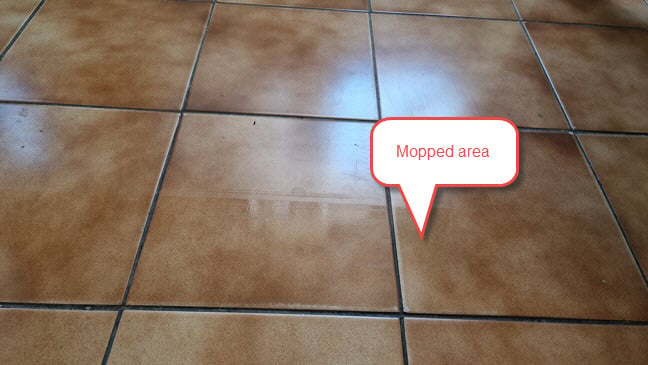
How the mopping works
The robot does a reasonable job of detecting obstacles and going around them. However, the first time it cleans your house, it tends to hit walls and obstacles relatively frequently, even though you have created a map. In subsequent runs, it gets better at navigating your home, which is great, because it helps avoid any damage that may shorten its lifespan. One aspect that won’t help its durability, is that the vacuum goes into places where its LIDAR dome can’t fit. For example, in the situation pictured below, it banged its dome against the furniture several times before accepting that it couldn’t go any further and getting itself out of there. I’m curious how resistant its dome is and whether, at some point, the Xiaomi Robot Vacuum S10 will start to malfunction because of repeated hits against the furniture.
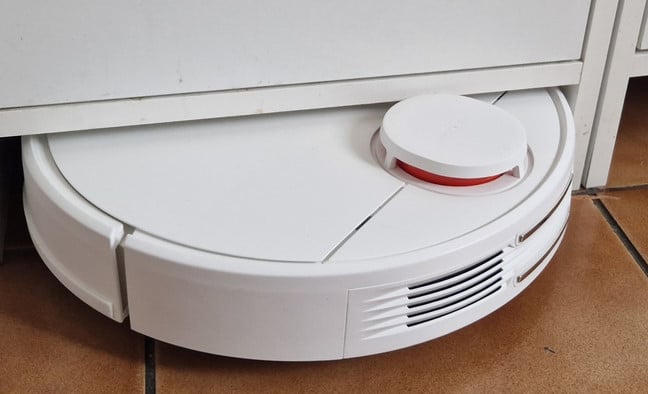
Xiaomi Robot Vacuum S10 is sometimes very ambitious
Like most robot vacuum cleaners, its nemesis is the dreaded cable. If you don’t remove your cables from its path, the Xiaomi Robot Vacuum S10 can get stuck. On the upside, though, it has no issues with uneven terrain or thick carpets, and it can even climb the bases of lampstands.
When using the Silent cleaning mode, the battery lasts up to 130 minutes. This is not a lot; similarly priced vacuum cleaners may offer more autonomy. Also, charging from 0% to 100% can take up to five hours, which is a considerable amount of time. The operating range and charging speed can be problematic if you have a large home.
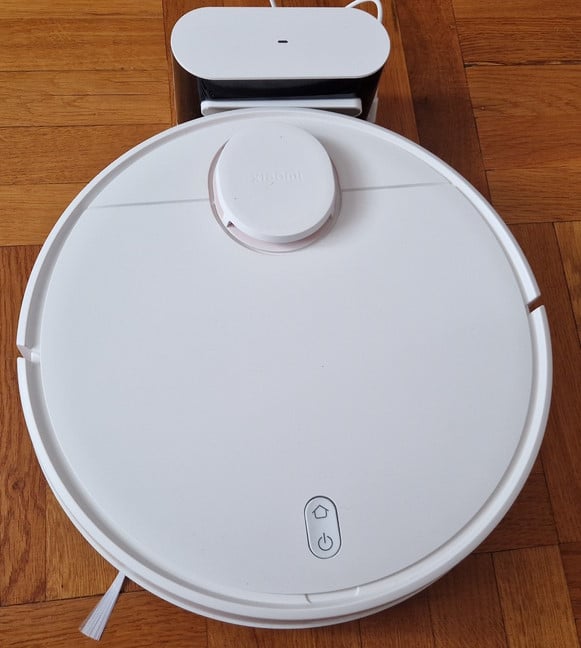
Charging can take a long time
On the software side, I noticed that firmware updates do not have any release notes. Also, you can’t find any information online about the changes they bring. This lack of transparency is worrisome, and Xiaomi should better communicate what each new firmware release does.
On the upside, the Mi Home app allows you to automate how the Xiaomi Robot Vacuum S10 works. For example, you can create complex scenarios (or Scenes) using simple If/Then rules and the myriad of smart devices compatible with the app. For example, you can sync the Xiaomi Smart Air Purifier 4 to start right after the Xiaomi Robot Vacuum S10 finishes vacuuming to find a clean home AND clean air when you return from work. If you have allergies, this kind of automation can be a godsend. The Mi Home app can also connect to Google Home and Amazon Alexa, allowing you to join the vacuum cleaner with many other smart devices integrated into these two platforms, even if Xiaomi does not make them.
Xiaomi Robot Vacuum S10 offers an enjoyable cleaning experience. The robot navigates obstacles and rooms well, the suction power is pretty good, and the mopping feature, while not amazing, can be useful. However, this device is better suited for smaller living spaces, and you must clean it often to keep it working within parameters. Lastly, the Mi Home app does a great job of controlling and coordinating the Xiaomi smart ecosystem.
What do you think of the Xiaomi Robot Vacuum S10?
You have arrived at the end of this review. Thanks for reading thus far. Now you know much more about the Xiaomi Robot Vacuum S10, its strengths and weaknesses. As you have seen, it’s a useful little robot that can help people who are really busy or just can’t be bothered to vacuum and mop their apartments regularly. Before closing this review, tell me your thoughts about this device: Do you intend to buy it? What other devices made it to your shortlist? Let me know in the comments. And if you already own a Xiaomi Robot Vacuum S10, share your experience so that other potential customers know what to expect.


 18.05.2023
18.05.2023 